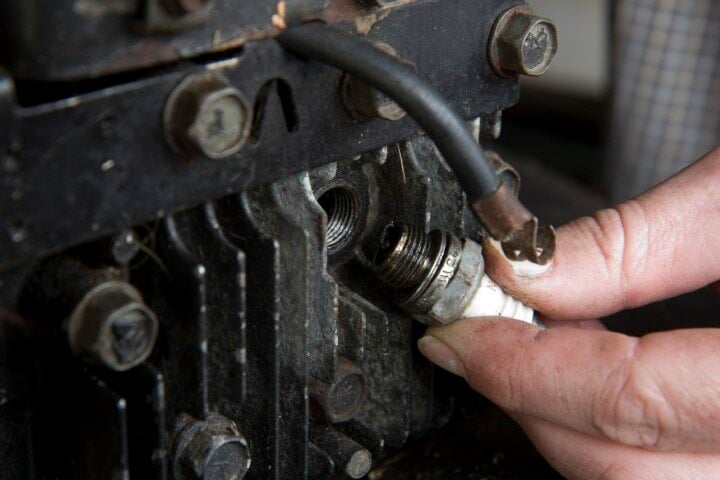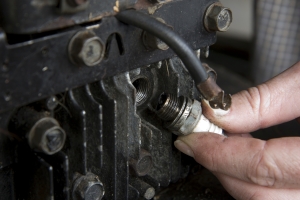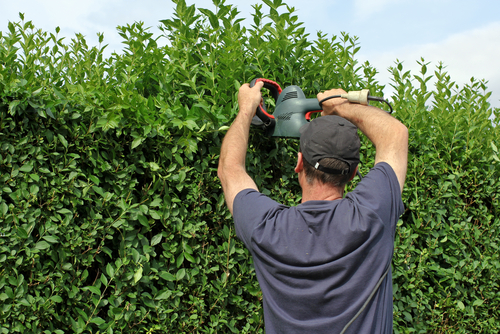Six Easy Tips for Better Lawnmower Maintenance
Remember how smooth your lawnmower ran when you first used it? Regular lawnmower maintenance will keep your mower in top running condition and will...
Unless you live somewhere like Florida (not that there’s anything wrong with that), you’ve probably had your small engines - lawnmowers, gas-powered trimmers, chainsaws - winterized and put away through the cold weather. Yes, we know there are snow blowers that are used in the winter but let’s put them aside. It’s time to bust those other small engines out, which means it’s time to look at the best recommendations for reviving them from their cold weather sleep so they’ll be ready for peak performance right out of the gate. We know these small machines are different. However the maintenance involved in getting them ready for use in the summer after their long winter nap involves multiple steps that are the same for virtually all of them.
Let’s run through some of these small engines you might need to bring up to speed this spring, and see what the recommendations are for each.
The spring and summer maintenance for lawn mowers is pretty similar, whether it’s a push mower or a riding lawn mower.
This is a safety step because you’ll be messing with the blade and you don’t want anything unexpected to happen. Locate the plug and disconnect the rubber boot.
The process to do this might differ between manufacturers, so you’ll want to check the manual on exactly how. Some models have a removable drain plug while for others, you’ll have to tip it on its side to drain. You’ll need to collect the oil and take it somewhere for disposal. Many local solid waste or recycling centers will accept used motor oil without a problem (they don’t want people pouring it down the drain).
Air filters need to be replaced once a season because they get clogged with debris and even oil. It functions to protect the engine and ensure its good operation. You’ll need to unscrew the air filter cover, then remove your old filter and install the new one. Keep in mind that if your mower uses a paper filter (which most do), you want to install it with the pleated side facing out. And be sure to reattach the air filter cover when you’re done.
By ‘replace’, we mean installing a new one. Earlier you would have disconnected the spark plug wire, so now you have to remove the old plug and replace it with a new one of the same kind. Make sure it’s gapped properly as well. Remember, though, you’re not reconnecting the spark plug wire, as we still have some things to do.
This will require you to remove the blade. Then you can sharpen it yourself with a file or grinder, or take it to a lawn mower shop where they can do this pretty easily.
You drained the oil earlier, so now it’s time to add it back in. Don’t forget to put that drain plug back in first; you don’t want all the oil leaking out by mistake. Most mowers use 10W-30 oil, but if you’re not sure what grade, check your owner's manual.
You probably will have drained the gas out of the mower before you put it up. If you didn’t, you’ll want to drain out what’s been sitting in there for the last few months. Before you refill the gas tank, treat the fuel with an ethanol gas treatment. This will do several things - it will stabilize the ethanol gas and make it more resistant to water absorption and phase separation throughout the season. It will supply extra detergency to help keep your mower’s fuel system clean and working at its best (plus it will clean out anything that happened to build up while it was sitting over the winter).
Let’s see, you’ve changed the air filter and spark plug, sharpened the blade, and replaced both the gas and oil. You are ready to get your mower back in action. But nothing’s going to happen without the final step, reconnecting the spark plug wire. Now, you’re ready for a fruitful season’s worth of grass-cutting.
Lawnmowers tend to have the most focus on them, but that doesn’t mean you should ignore your other small engine equipment - chainsaws, hedge trimmers, etc.
As you get ready for the summer, it's important to start with a check on your small engine's oil. Low or dirty oil can hinder performance, so top up as needed or change the oil entirely, adhering to the manufacturer's specifications for type and amount. Next, ensure that the air filter is clean and intact—a dirty or damaged air filter can diminish engine efficiency and performance. If it looks worn out, replace it to keep your engine running smoothly.
Additionally, take a moment to inspect and replace the spark plugs if they are worn or soiled, as this can prevent your engine from starting or performing optimally. Follow the manufacturer’s guidelines for replacement. You should also examine the fuel system for leaks or damage and replace old fuel with fresh, adding an ethanol fuel stabilizer to extend its life. Finally, give your equipment a thorough cleaning—focus on the deck, blades, and undercarriage of lawnmowers and clear out any accumulated debris or grass clippings to ensure your machinery is in top condition for the season.
If you’re going to mow, you’re also going to have to trim.
To ensure your string trimmer is in peak condition for a tune-up this spring, begin by consulting the operator’s manual for a recommended maintenance schedule. If you've misplaced the manual, it's often available online. Before starting any maintenance, always disconnect the spark plug wire to ensure safety.
As the season approaches, make sure you have sufficient replacement trimmer lines on hand and familiarize yourself with the refilling procedures. Typical maintenance tasks for string trimmers include inspecting the cutting shield and gearbox for any signs of damage or debris, cleaning and possibly replacing the air filter, replacing the spark plug, and checking the oil level in 4-cycle engines before each use. For those, also change the oil after the initial 10 hours of operation and then every 28 hours.
Be aware of the type of gas engine your trimmer uses—models with a 2-cycle engine require a mix of oil and gas, which should be prepared in a separate container, while 4-cycle engine models operate on gasoline and have a separate oil reservoir, similar to larger yard equipment. For optimum performance, keep the appropriate type of fuel ready for use throughout the season.
To this last point, remember that more places across the country are going to be selling E15 gasoline, which is hard on small engines like these. So it’s especially important to use an ethanol gas treatment like we talked about earlier. It will protect your equipment from the higher ethanol levels and keep it working its best throughout the season.

Remember how smooth your lawnmower ran when you first used it? Regular lawnmower maintenance will keep your mower in top running condition and will...

Spring is coming and it's almost time to break out the lawn mower in anticipation for warm weather use. Lawn mowers are expensive pieces of...

It's going to be the first nice weekend, therefore, it might be time to take your small equipment and lawn equipment out of storage for the spring...